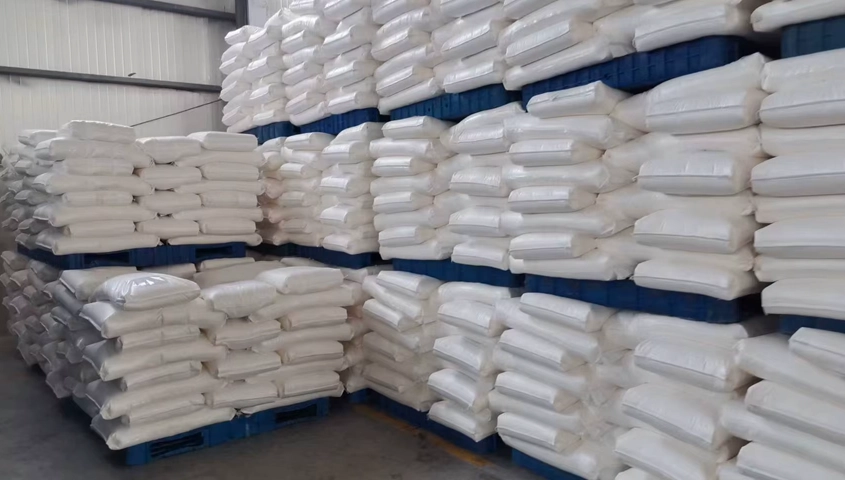Supplier of Stearic acid from Turkey & UAE

Stearic Acid Overview
Stearic Acid (Octadecanoic Acid) is a long-chain saturated fatty acid naturally present in both animal and plant fats. With the chemical formula C18H36O2, it appears as a white, waxy solid at room temperature and is almost odorless. This compound is insoluble in water but soluble in alcohol, ether, and other organic solvents, making it ideal for a wide range of industrial and commercial applications.
Because it has both hydrophilic and hydrophobic parts, stearic acid is an excellent emulsifier and stabilizer. It is widely used in industries that require controlled consistency and product stability, such as cosmetics, rubber, plastics, and food manufacturing.
Physical and Chemical Properties of Stearic Acid
Stearic acid has a molecular weight of 284.48 g/mol and a chemical formula of C18H36O2. It has a melting point of about 69°C (156°F) and a boiling point around 383°C (721°F).
It is essentially odorless, white, and waxy in appearance.
This compound is insoluble in water but dissolves easily in organic solvents like ethanol, chloroform, and ether. In aqueous dispersion, it shows a slightly acidic pH between 5.5 and 6.5, which makes it mild and safe to handle.
These characteristics allow stearic acid to act as an efficient surface-active agent, lubricant, and stabilizer across a variety of industrial processes.
Applications of Stearic Acid
1. Cosmetics and Personal Care
Stearic acid is widely used as a thickener, emulsifier, and stabilizer in lotions, creams, deodorants, and shampoos. It improves product texture, ensures smooth application, and enhances long-term stability, making it essential in high-quality cosmetic formulations.
2. Soap Manufacturing
In soap production, stearic acid reacts with alkalis to produce harder bars with better lather and durability. This enhances product performance and ensures a consistent, premium feel in bar soaps.
3. Rubber and Plastic Industry
Stearic acid serves as a vulcanization activator in rubber, increasing flexibility and strength. In plastics, it functions as a stabilizer and mold-release agent, helping achieve smooth surfaces and preventing material degradation during manufacturing.
4. Industrial Lubricants and Release Agents
It reduces friction and prevents sticking in metalworking, plastic, and rubber processes. By improving material flow and protecting equipment, stearic acid enhances production efficiency and product quality.
5. Food Industry
Used as a food-grade emulsifier and stabilizer, stearic acid improves the texture, consistency, and shelf life of products like chocolate, margarine, and confectionery. It ensures uniformity during production and storage.
6. Pharmaceutical Industry
In tablet and capsule manufacturing, stearic acid acts as a lubricant and flow agent, preventing ingredients from sticking to machinery and ensuring smooth, high-quality production of pharmaceuticals.
7. Candle Manufacturing
Stearic acid hardens wax, improves burn time, and enhances the appearance of candles. It also prevents deformation, making it crucial for both commercial and DIY candle production.
8. Lead-Acid Batteries
It is used in battery manufacturing to reduce corrosion, improve performance, and extend battery life by enhancing chemical stability within the battery cells.
9. Textile Industry
Stearic acid acts as a lubricant during spinning, weaving, and knitting, reducing friction and improving the feel, finish, and quality of fabrics.
10. Surfactants and Detergents
It is a key ingredient in detergents and cleaning products, where it stabilizes foam and emulsifies oils. This ensures efficient cleaning and consistent performance in laundry detergents, dish soaps, and surface cleaners.
Grades of Stearic Acid
Stearic acid is available in several grades depending on purity and end use:
-
Triple-Pressed Stearic Acid: More than 99% purity, used in cosmetics and pharmaceuticals.
-
Double-pressed Stearic Acid: Moderate purity, suitable for rubber and plastic processing.
-
Commercial Grade Stearic Acid: Used in detergents, lubricants, and candle production where very high purity is not essential.
Production Process of Stearic Acid
The production of Octadecanoic Acid typically involves the following steps:
-
Hydrolysis: Animal fats or vegetable oils are hydrolyzed under high pressure, splitting triglycerides into fatty acids and glycerol.
-
Saponification: The fatty acids react with alkalis such as sodium hydroxide to form soap containing stearic acid.
-
Distillation and Fractionation: Fatty acids are separated based on boiling points through distillation.
-
Pressing and Refining: The stearic acid undergoes multiple pressing and refining steps to achieve the desired purity and grade.
Handling, Storage, and Transportation
Stearic acid should be stored in a cool, dry, and well-ventilated area, away from direct sunlight and heat sources. It should be kept in tightly closed containers to avoid moisture absorption or contamination.
Although non-hazardous, basic personal protective equipment, such as gloves and goggles, should be used during handling. During transport, containers must remain sealed and protected from extreme temperatures.
Packing of Stearic Acid
Stearic acid is packed and supplied in different forms depending on customer requirements:
-
25-kilogram multi-layer paper bags with polyethylene lining are ideal for smaller industrial applications.
-
500-kilogram and 1000-kilogram jumbo bags are used for large-scale manufacturing.
-
Plastic-lined fiber drums are preferred for high-purity grades used in cosmetics and pharmaceuticals.
Each packaging type ensures protection against moisture and environmental exposure during shipping and storage.

